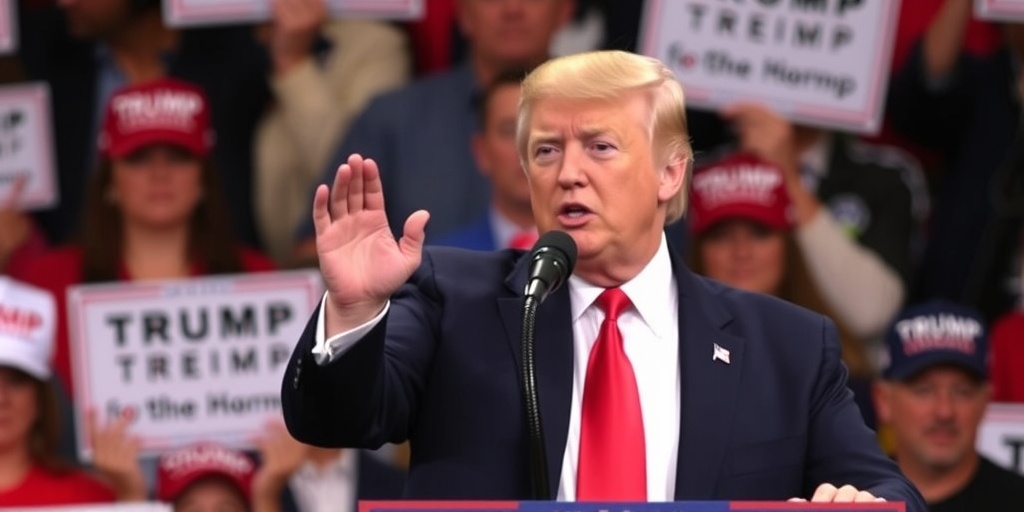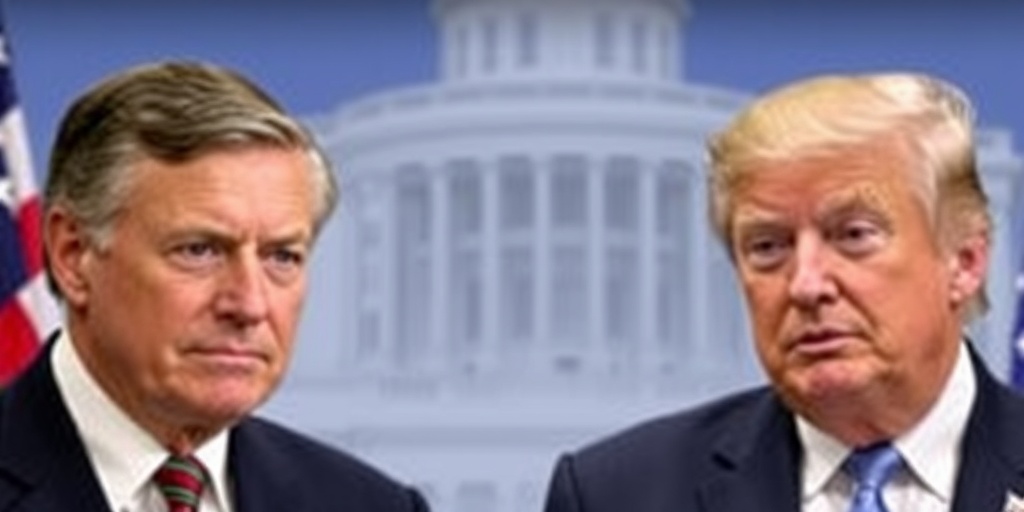Now Reading: Investors Misjudged Their Influence Over Trump
-
01
Investors Misjudged Their Influence Over Trump
Investors Misjudged Their Influence Over Trump

Trump’s Economic Policies Spark Uncertainty Amid Promises of Growth
In the wake of President Donald Trump’s election victory, investors were initially buoyed by his promises of lower taxes and deregulation, viewing them as pathways to economic growth. However, a mixed sentiment lingered around his less popular proposals, such as tariffs and restricted immigration. As the new administration commenced, stock markets surged, reflecting a belief among investors that Trump would prioritize business-friendly policies while toning down potentially disruptive actions.
Yet, this optimism appears to have been misplaced. In his early days in office, President Trump has shifted the focus of his economic policy towards tariffs, levying steep penalties on both allies and adversaries. He has not only threatened to cut subsidies relied upon by various sectors but has also amplified efforts to reduce the federal workforce, which could result in unemployment for tens of thousands of government employees and diminish federal investments in critical areas like research and development.
The dissonance between financial markets and President Trump’s aggressive tariff strategy has become increasingly evident. Despite warning signs of economic strain and a downturn in stock prices, Trump has remained unfazed, proclaiming the current turmoil as a “necessary period of transition.” Members of his team echo this sentiment, framing the adverse effects of tariffs and government spending cutbacks as a tough but essential approach to rehabilitate the economy.
As internal and external pressures mount, Trump’s administration has taken an unyielding stance. Treasury Secretary Scott Bessent described a “detox period” as fundamental for the economy, characterized by a call to cease reliance on government spending. White House Press Secretary Karoline Leavitt referred to the current state as a transitional phase that would ultimately lead to a "golden age of American manufacturing," dismissing economic indicators as transient snapshots rather than indicative of a larger trend.
While some economists see the merits in this tough love approach, the majority remain skeptical. They argue that the fundamentals of economic stability, such as consistent growth and manageable inflation, are at risk under the current trajectory of Trump’s policies. Concerns about rising prices and slowed growth due to tariffs are validated by evidence that consumer confidence is waning; Americans are reportedly anticipating a hike in living costs, a forecast that poses a political and economic challenge for Trump.
The situation is complicated further by a recent phenomenon termed the “shock factor,” which has surfaced among businesses. Many are pausing hiring and investment decisions amid uncertainty, revealing a palpable hesitance to commit amid escalating trade tensions. Thomas Simons, an economist with Jefferies, highlighted this trend, noting a noticeable slowdown in business activity as companies await clearer signals from the government.
Regardless of whether the economy is truly on the brink of recession, the prevailing notion suggests that consumers are increasingly wary. The optimistic view among some sectors that an economic “shock therapy” may be beneficial has been met with skepticism from experts who caution against the potential for long-term fallout from short-term pain.
Historically, Trump has portrayed scenarios where Americans must endure temporary setbacks for future gain, as exemplified by farmers affected by his previous trade initiatives. Yet this time, the landscape has shifted dramatically; the broad implications of his current policies could inflict wider damage during an already precarious period marked by persistent inflation and high costs of borrowing. With surveys indicating anxiety among consumers about price increases tied to tariffs, the potential for these fears to translate into reality looms large.
Federal Reserve officials are observing the unique intersection of stagnant growth and inflationary pressure, emphasizing that traditional approaches to economic stabilization may not apply under these conditions. This “stagflationary impulse,” as described by Austan D. Goolsbee, president of the Federal Reserve Bank of Chicago, highlights the gravity of the administration’s situation.
There are contrasting narratives regarding the economic environment inherited by the Trump administration. Bessent contends that the previous economic metrics masked inherent weaknesses, suggesting an unsustainable over-reliance on governmental support. However, critics, including former Chair of the Council of Economic Advisers Jared Bernstein, argue that the current administration squandered a robust economic framework within a matter of weeks, plunging markets and consumer confidence into disarray.
The path ahead remains fraught with uncertainty. The resilience of the post-pandemic economy and private sector activity may still withstand the administration’s current policies, but vigilance is necessary. As the administration rolls out its agenda, economists and stakeholders alike are left to grapple with the evolving landscape of American economic health and the very real implications of policy decisions made today.
Stay Informed With the Latest & Most Important News
Previous Post
Next Post
-
 01New technology breakthrough has everyone talking right now
01New technology breakthrough has everyone talking right now -
 02Unbelievable life hack everyone needs to try today
02Unbelievable life hack everyone needs to try today -
 03Fascinating discovery found buried deep beneath the ocean
03Fascinating discovery found buried deep beneath the ocean -
 04Man invents genius device that solves everyday problems
04Man invents genius device that solves everyday problems -
 05Shocking discovery that changes what we know forever
05Shocking discovery that changes what we know forever -
 06Internet goes wild over celebrity’s unexpected fashion choice
06Internet goes wild over celebrity’s unexpected fashion choice -
 07Rare animal sighting stuns scientists and wildlife lovers
07Rare animal sighting stuns scientists and wildlife lovers




















